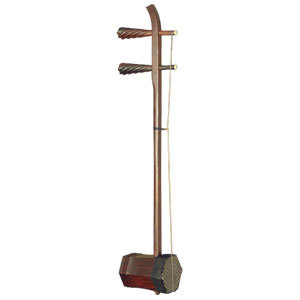Quick Bow of Erhu Bow
Fast bow refers to a bowing method in which sixteenth notes are played with a split bow at a speed of more than 120 beats per minute. Quick bow is a difficult technique that must be mastered in erhu playing, and it is also the most difficult for those who are learning erhu at present.
Why is the fast bow harder to master? This is because it requires the close cooperation of both hands of the player, and must be accurate in pitch, uniform in timing, clear in pronunciation, and full of granularity, and in fast passages, it often includes quick string changes, quick handle changes, etc. Difficult skills, which increases the difficulty of the fast bow. Therefore, the mastery of the fast bow technique is often used as a measure of the mastery of an erhu player.
In the previous erhu textbooks, some people have always thought that the fast bow is the speeding up and shrinking of the divided bow, which is the action of dividing the bow. But with the rapid development of modern erhu techniques, there has been a different understanding of this point of view. "The action of the longbow is accelerated and reduced, which is the action of dividing the bow" is correct, but the performance of the fast bow is not a simple action of dividing the bow to speed up and shrink.

We can clearly understand the difference between the longbow and the fastbow by carefully analyzing the action hub (ie the "axis" of motion) of the longbow and the fastbow.
Longbow: When drawing the bow, with the wrist as the first action point and pulling out to the right, the right arm gradually extends outward until the tip of the bow; when pushing the bow, the upper arm is pulled in as the first action point to advance to the left , the forearm and wrist then return to the root of the bow. From this we can see that when playing the longbow, the upper arm, the wrist and the fingers all move in the same direction, that is, when the bow is drawn, it stretches to the right, and when the bow is pushed, it returns to the left. , the "pivot" of their movement is at the shoulder.
Split bow: Because the speed is not too fast, the "axis" of its action can still be placed on the shoulders.
Fast bow: When drawing the bow, the fingers drive the bow to the right, but the elbows swing to the left; when the bow is pushed, the fingers drive the bow to the left, but the elbows swing to the right. It can be seen from the above analysis that when playing a fast bow, the hands and elbows swing evenly in opposite directions to each other at the same time, and the "axis" of their movement should be placed in the middle of the forearm.
These are the differences in the "pivot" of motion between the longbow, split bow, and fastbow. The fastbow has a much larger stick than the longbow and split bow, and this stick needs to be maintained at all times. That is to say, the bow hair should be close to the strings when changing the bow, and each bow should have a "ga" sound head. If you play this way of playing slowly, the sound will be very noisy and unpleasant, but if you play it faster, the pronunciation will appear clear and full. If the stringing degree cannot be maintained when changing the bow, so that each note loses its initial and is played in the shape of a jujube nucleus, then the pronunciation of the fast bow will be "snoring" and ambiguous.
So, when we play the fast bow, what are the requirements for the left and right hands? When playing a fast bow, the right hand is the active factor. The speed of the rhythm, the sound of the beginning of the sentence, the change of strength, etc., are all mastered and controlled by the right hand.
Therefore, when playing, you must:
First, the timing of sixteenth notes is very accurate and uniform;
Second, the beginning of each sound should be clear and decisive;
third. Changes in strength or rapid string changes cannot affect the stability of the speed.
In the process of fast bow performance, the left hand is a passive factor, and the requirement for it is to make the "point" of the pressing finger exactly match the sound head of each note of the right hand, no matter how complicated the note is, or change the hand , No matter how difficult it is to jump the handle, it is not allowed to make the action lag and stagger from the pitch of the bow.
But in fact, the "difficulty" of the fast bow is mainly on the left hand, because the movements of the left hand are much more complicated than those of the two hands. Moreover, it must be completed in the extremely small gap between the sounds, and at the same time, the intonation must be ensured. This is indeed quite difficult, and the player needs to pass a lot of strict training to achieve the degree of freedom of use. Therefore, the practice of fast bow needs to be done step by step. Don't rush for success. You can start with slow drawing first, and after you have reached a certain level of proficiency, you can play the fast bow at the speed specified in the music.
 渝公网安备 50010702504639号
渝公网安备 50010702504639号